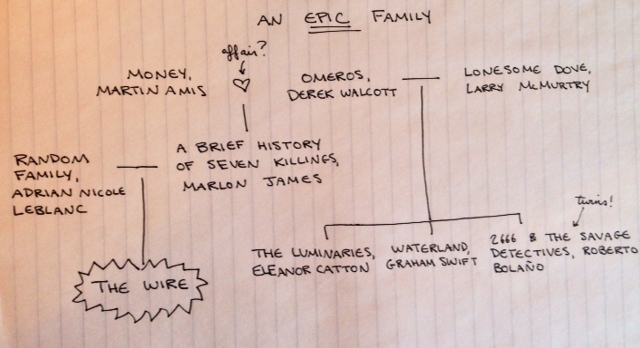Beyond Haruki Murakami: Where to Find Japanese Lit

Forget Haruki Murakami. Welcome to the world of Mariko Nagai and Asa Nonami. This month’s Asian lit coverage includes two Japanese short stories by Nagai and Nonami (which center on gender and death), some lit mags featuring a wealth of Asian lit—and a Japanese movie that’ll make you laugh about death.
Asa Nonami is a crime and horror writer. She also likes to write about bodies—what we and others do to them. Add these two qualities together and you have “Face,” an excerpt from the novel Body, as translated from the Japanese by Takami Nieda. The short story about cosmetic enhancement and its growing prevalence bears undertones of addiction and plunges into fears borne out of vanity. The plot spirals to a sense of urgency, thick with foreshadowing and tension that plays on the reader’s own fears.
The story begins with 44-year-old protagonist Aiko Takeda discussing the crow’s feet aesthetically weighing down her eyes. Aging is a crime, if we believe the plastic surgeon’s tone and words. Its only prevention is continual. We take care of the crow’s feet, then a face lift, then more and more parts of the entire body:
But this isn’t some kind of magic. We can’t stop time, so you’ll need to continue caring for your skin, or you’ll gradually go back to looking older again.
The more he talks to her the more he sounds like a drug pusher. And pretty soon all three women in the Takeda family are spending millions of yen, increasingly addicted to prevention of fear, to vanity. True to the tropes of her genres, Nomani puts us in an Alfred Hitchcock and Twilight Zone frame of reference, setting us up for a character who changes from a good little housewife to something almost grotesque.
Just how ugly did he think she was? What husband could remain so oblivious to the changes in his wife of twenty years, a wife who’d borne him two children? Fine. Then I’ll just have to get rid of the double chin. Aiko no longer wavered. In fact, by the end of the summer, she was practically defiant.
The end twists curiously to make a reader delight in Nomani’s ability to misdirect us. While this theme could be easily explored on this side of the planet, its Japanese origins add to the effect on Western readers. We start to think about vanity and those extravagantly cosmetically enhanced like Mickey Rourke and Jocelyn Wildenstein. This is no longer a Western phenomenon. It’s infiltrated Asia as well. Will/can aesthetics be globalized as thoroughly as McDonald’s and Starbucks?
From aging we move to death in Mariko Nagai’s short memoir, “Instruction for the Living” published in Drunken Boat. Nagai pulls no punches. The Pushcart Prize-winner in fiction and poetry barrels her way into this piece about the quotidian processes to be handled after a loved one dies. Her prose is straightforward, even blunt, but not without reason. She dehumanizes a recently deceased man from “him” to “it,” as if writing for a medical textbook. This use of pronoun and prose that thwart immediacy are fantastic literary devices that aim to push away the reader and the recently deceased, to combat a maudlin emotionality from creeping in. “Death, the nameable, cannot be exacted: it is not the sickness—cancer—that he died of. Instead, heart failure. No matter. He is dead. This is a cadaver.”
The narrator’s immediacy feels ghostly, weaving in and out of the story like someone alternating between emotional upheaval and control. She is not always clinical. She cannot be when it comes to death.
Nagai’s piece gleans upon readers an appreciation for the differences between Japanese and American sentiments toward death—or so it seems at the beginning. The end, however, glows with a resounding universality that destroys any cultural differences.
Here are some other Japanese writers and literary outlets to explore.
- Yukio Mishima, a prolific and brilliant writer of multiple genres, whose iconic scenes and characters Paul Schrader (Taxi Driver, Raging Bull, American Gigolo) cinematized in a rather dark film.
- Read or listen to the essay, “Is It Possible to Fear Properly?” by Gen’yū Sōkyū, a Zen Buddhist monk who moonlighted as an essayist and novelist, and find other Japanese works in Asymptote.
- Asia Literary Review ran Dazai Osamu’s short story, “Katydid,” translated by Ralph McCarthy, giving readers a glimpse into how some Japanese writers use literary tropes very differently from Western writers.
- Didn’t get enough death from Nagai? Check out another funny and culturally awakening tale about death, the Oscar-winning Japanese dramedy Departures.


